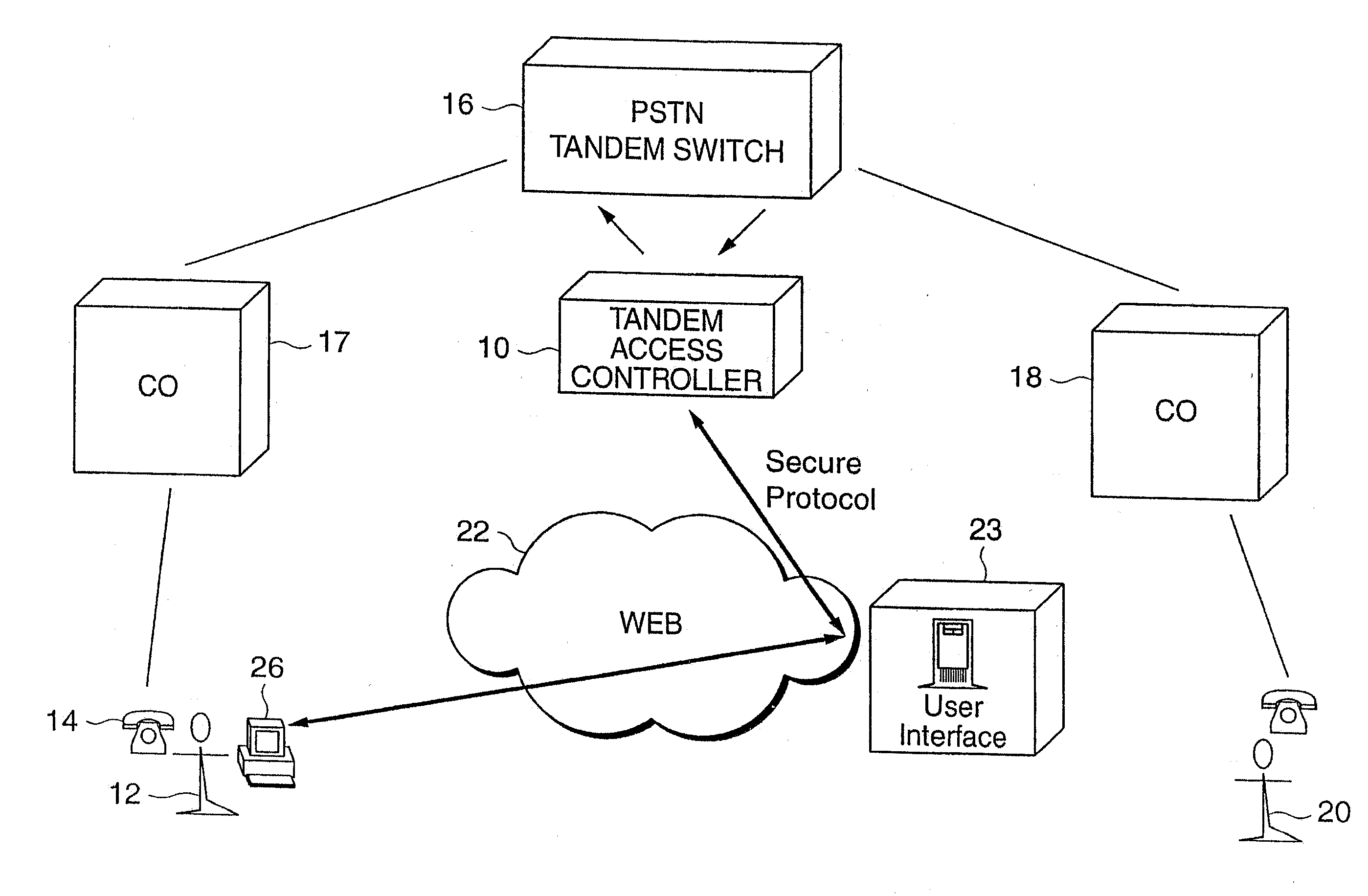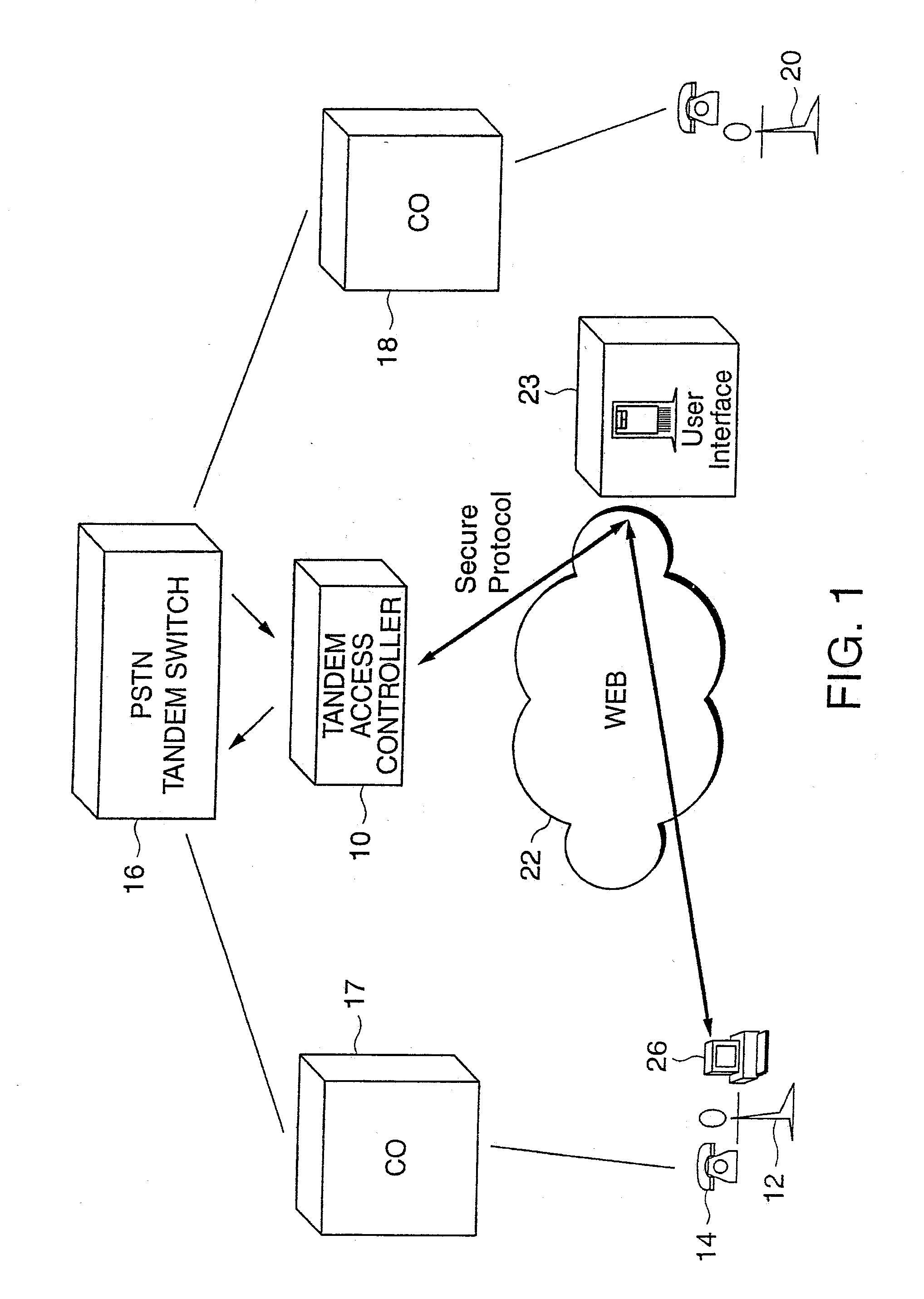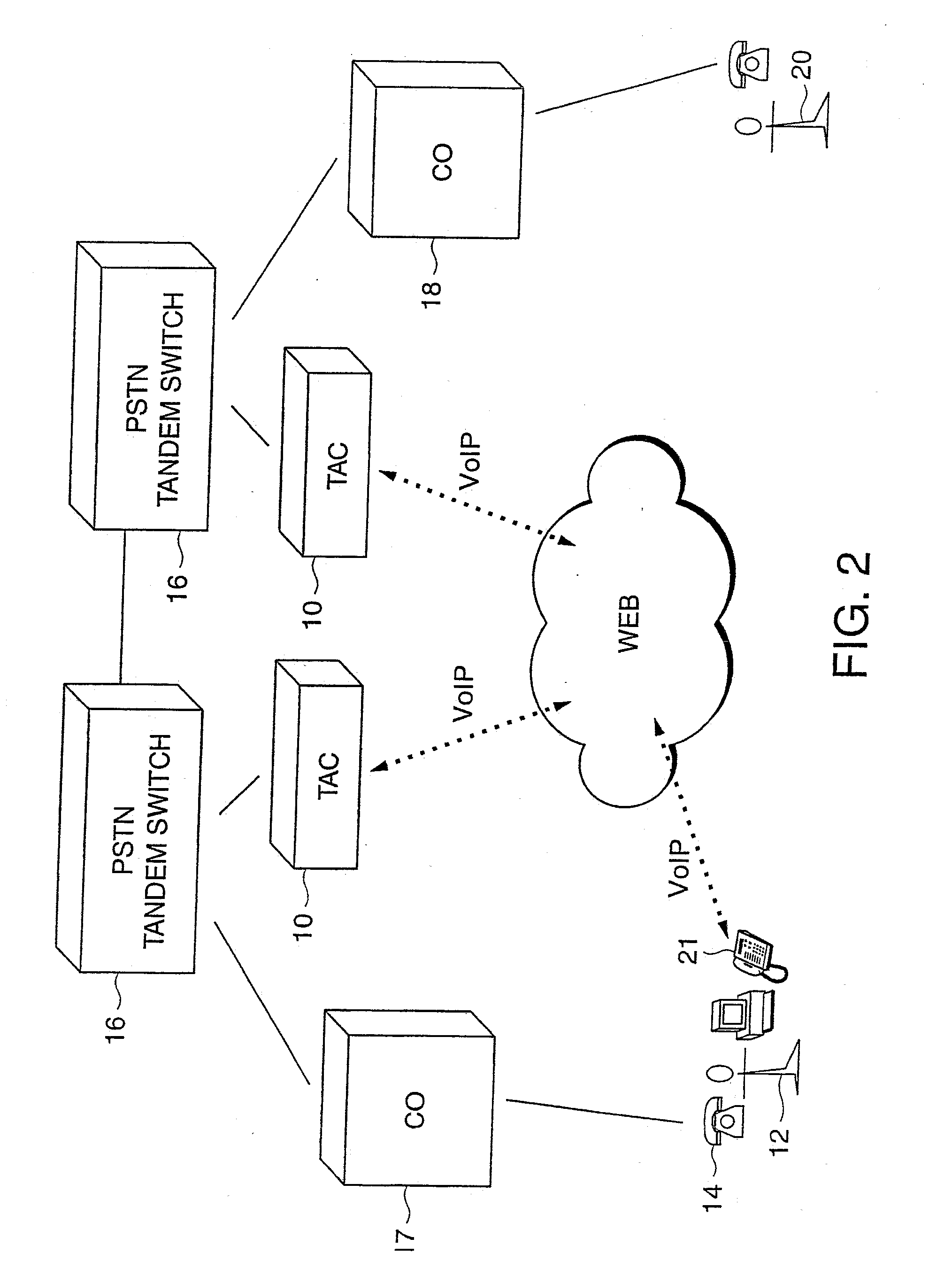Branch calling and caller id based call routing telephone features
a call routing and call feature technology, applied in the field of telephone services, can solve the problems of not providing true 3rd-party call control, offering an extremely limited number of features, and not being economical, and achieve good economics and user interaction
- Summary
- Abstract
- Description
- Claims
- Application Information
AI Technical Summary
Benefits of technology
Problems solved by technology
Method used
Image
Examples
Embodiment Construction
[0032]FIG. 1 shows a tandem access controller (TAC) 10 that allows an authorized subscriber 12 to establish 3rd-party control criteria for calls to the subscriber's telephone 14 (having a “public” phone number that callers dial). In one embodiment, the TAC 10 is a programmed processor. The TAC 10 may use any combination of hardware, firmware, or software and, in one embodiment, is a conventional computer programmed to carry out the functions described herein.
[0033]The TAC 10 is connected to or inside the conventional PSTN tandem switch 16 such that calls may flow through the TAC 10 in the same manner as the existing PSTN tandem switch, except that additional 3rd-party features are applied to the call. As is well known, PSTN tandem switches are exchanges that direct telephone calls (or other traffic) to central offices 17,18 or to other tandem switches. Details of the operation of the existing phone network may be found in the publication entitled “New Net SS7 Tutorial,” by ADC Telec...
PUM
 Login to View More
Login to View More Abstract
Description
Claims
Application Information
 Login to View More
Login to View More - R&D
- Intellectual Property
- Life Sciences
- Materials
- Tech Scout
- Unparalleled Data Quality
- Higher Quality Content
- 60% Fewer Hallucinations
Browse by: Latest US Patents, China's latest patents, Technical Efficacy Thesaurus, Application Domain, Technology Topic, Popular Technical Reports.
© 2025 PatSnap. All rights reserved.Legal|Privacy policy|Modern Slavery Act Transparency Statement|Sitemap|About US| Contact US: help@patsnap.com



